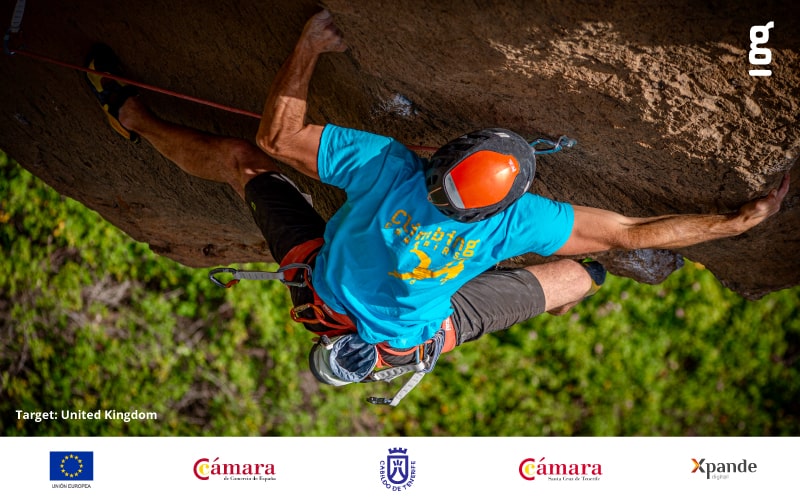Climbing consists of going up a wall or slope. Its origin comes from mountaineering. In order to guarantee the safety of people, many of the routes have fixed belays. Good physical condition is required to climb the more complicated and less touristic routes.
Climbing takes place in different terrains, which gives rise to different typologies of this activity:
Rock climbing: This is done in natural environments, specifically on rock walls or slopes. Within this modality there are several specialities.
In climbing walls: These are within the reach of most of the population, as they can be found in specialised places such as sports facilities.
The approach to climbing can vary greatly depending on the methodology employed. Below are the most commonly used methods, each with its own unique characteristics:
Artificial: Climbing materials such as carabiners, ropes and belays can be used.
Free: This is the one in which the athlete only uses his body to progress in the climb. Materials such as magnesium or climbing shoes can be used to optimise performance. Safety equipment can also be used.
Alpine: This is one of the most risky and is therefore not recommended for beginners. It is necessary to have knowledge of several disciplines.
Classic or traditional: It is known for being the most sustainable climbing, as it is the most environmentally friendly. Temporary belays are used, which are installed and removed as the route progresses.
Sport: This is a type of free climbing, but it focuses more on the athletic aspect of the discipline.
Solo: In this modality there is no partner to belay you in your climb.
On big walls or ramparts: It is known because the climbers spend several days on the route, the climbers have to sleep and eat in the same place where the route is being done.
Bouldering: This involves climbing boulders or low walls without conventional safety materials, as the height is lower. Mats are used to minimise fall injuries.
Psicobloc: Similar to bouldering. It is a type of climbing that takes place on cliffs, using water to soften the fall.

What types of climbing can be done in Tenerife and where?
One of the best places to go climbing in Tenerife is Arico. In this municipality there is a wide variety of climbing spots of different difficulties. It should be borne in mind that to climb in some of these areas you need a permit from the Cabildo as there are routes within protected areas.
Another point of interest is the Anaga area, in the north of Tenerife, where there are also several routes of different levels.
The types of climbing available in Tenerife include traditional or classic climbing, psicobloc and bouldering, as well as crack, overhanging and slab climbing.
With the perfect climate and spectacular natural landscapes, Tenerife is the perfect place to experience the thrill of climbing in all its forms. Dare to experience a new adventure in the heights!

